Ooh, look! The Jeffersonia is blooming! Spring really is here.
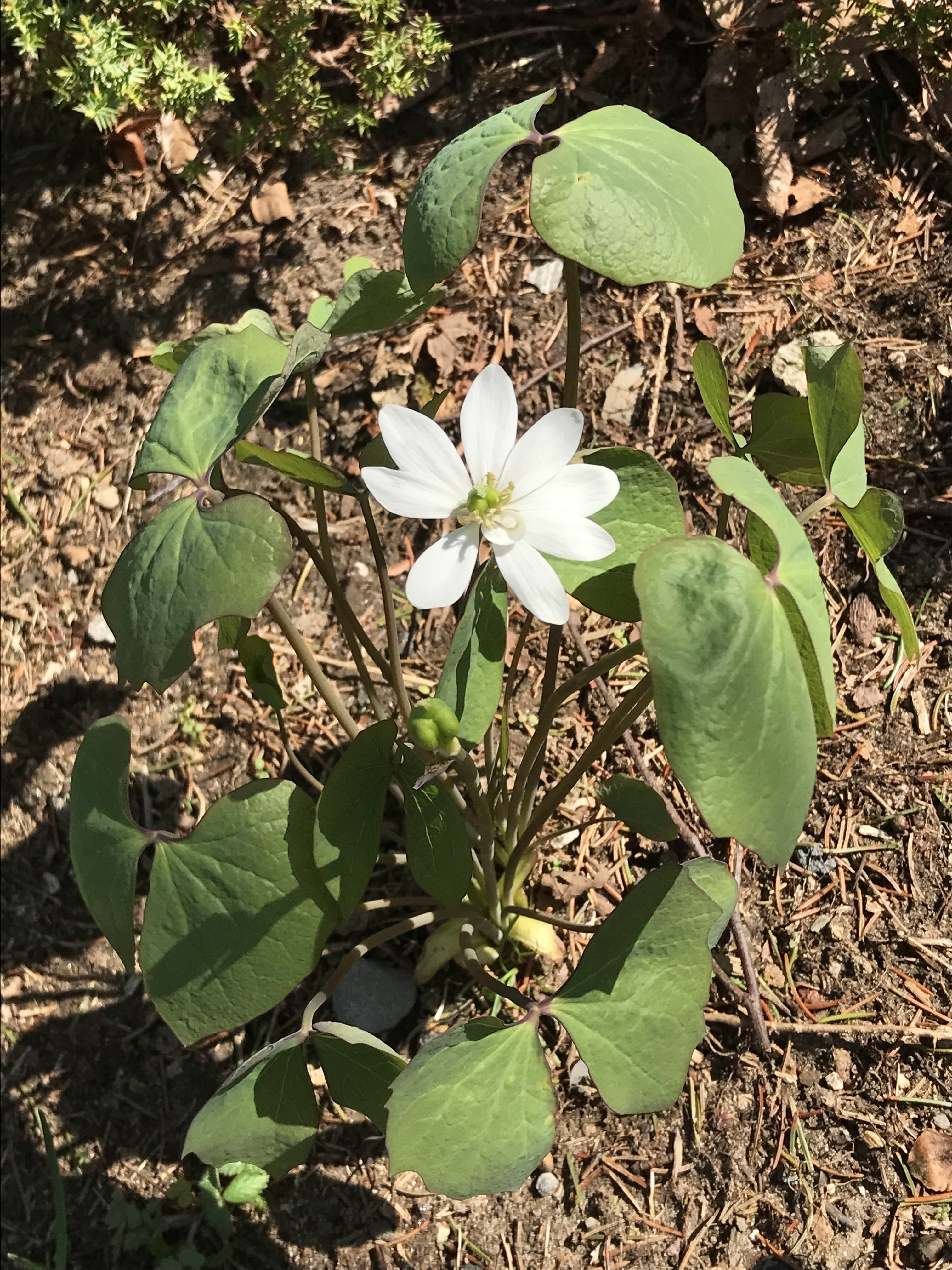
The bright white flowers of Jeffersonia diphylla (also called “Twinleaf”) may only last a few days, but this fascinating native wildflower is a woodland wonder all summer long.
When it emerges in early spring, the tender foliage is purple, protected from ultra-violet light coming through still-bare trees by a natural sunscreen called anthocyanin pigment, which fades as the leaves get stronger and turn green. Next, slender flower stems push through the ground, reaching 6 to 8 inches high, each with a single bud.

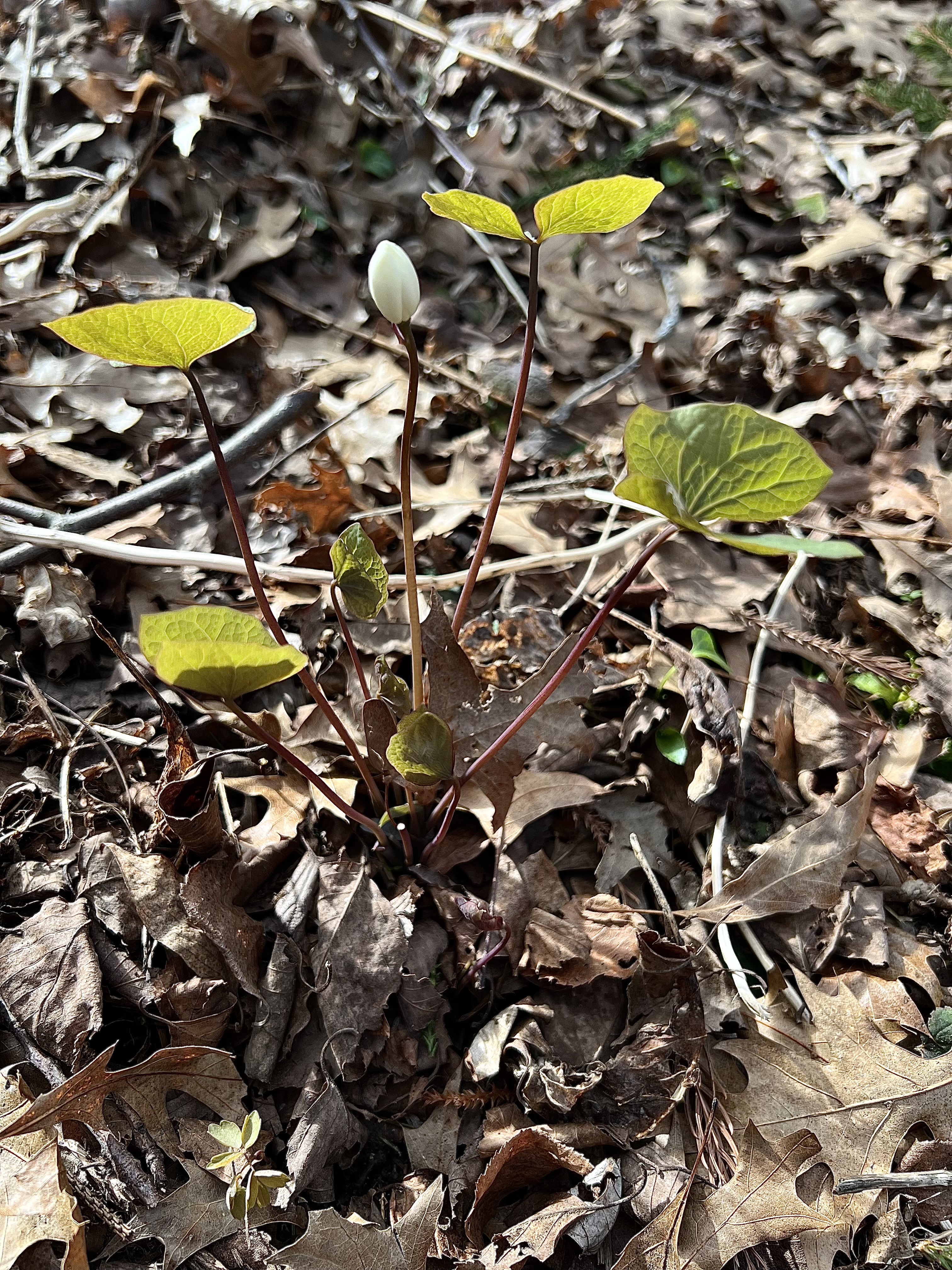
As the leaves fully open, they reveal the unique butterfly-wing shape that gives the plant its common name, Twinleaf.
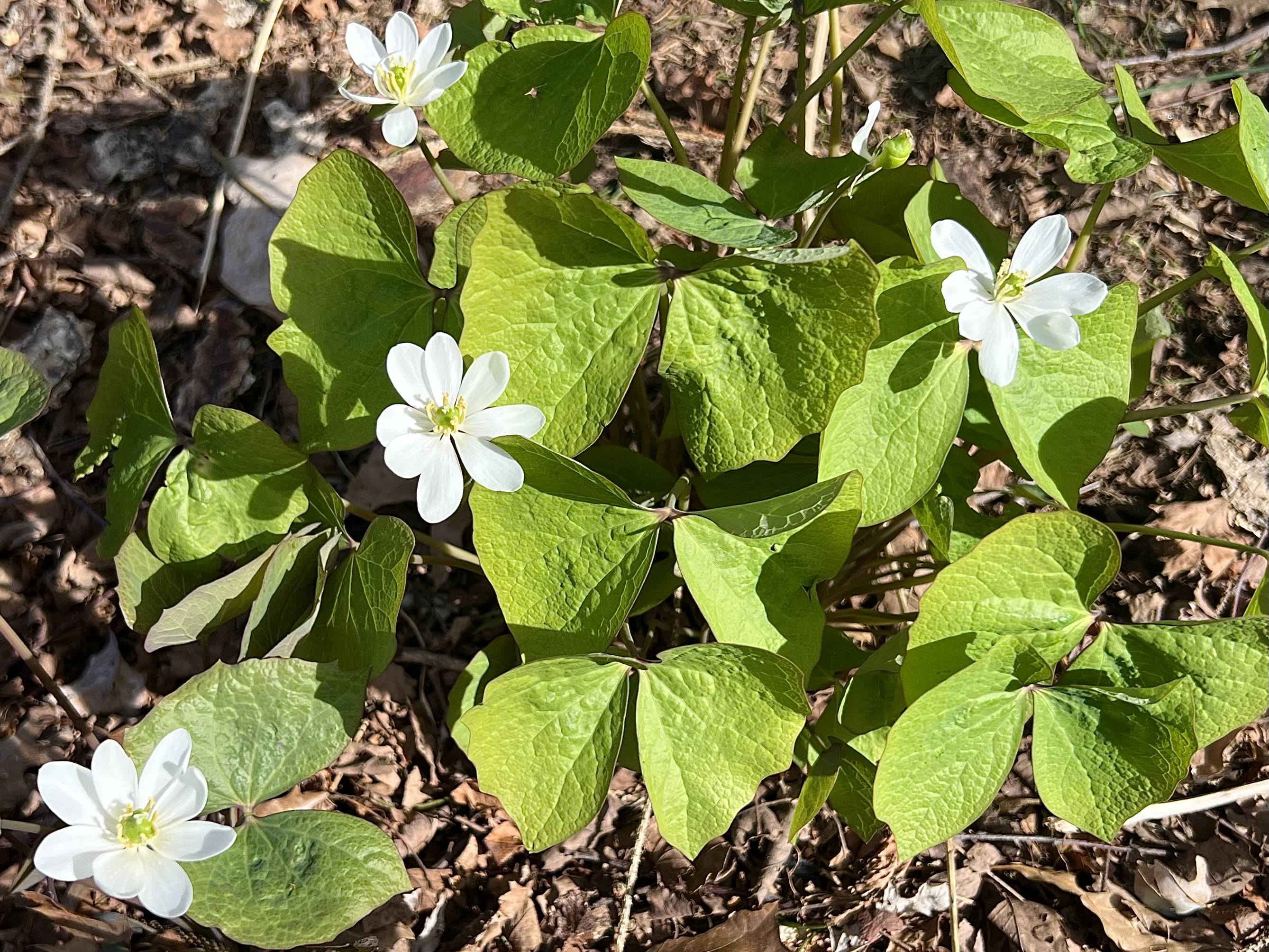
The flowers are about an inch across with 8 petals and stamens loaded with pollen. The protein-rich pollen provides nutrition to early pollinators, mostly native bees, at a time when pollen is otherwise scarce.
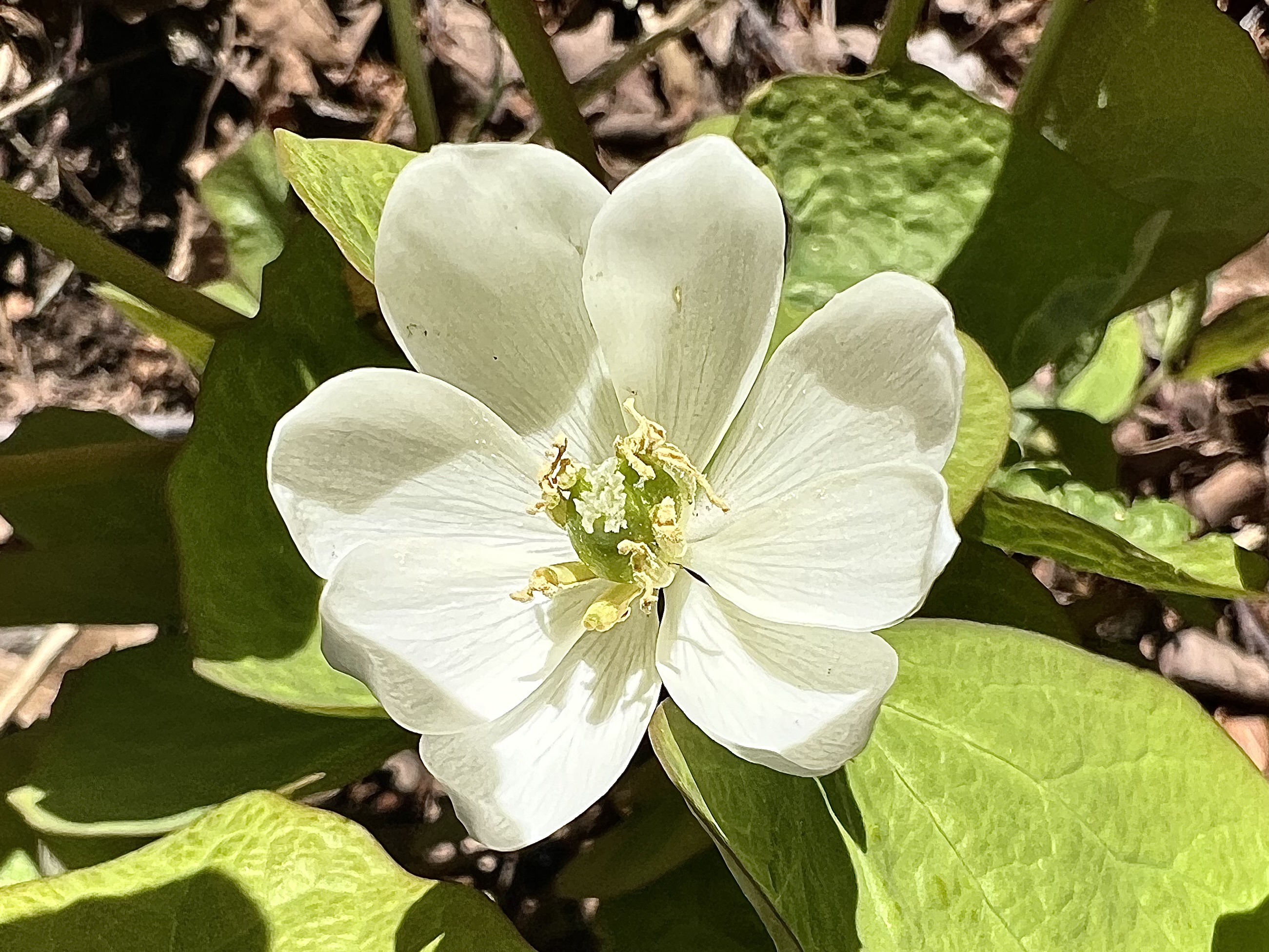
If bad weather makes insects scarce, Jeffersonia is able to self-pollinate because the stamens grow tightly around the pistils. When pollination is successful, the flower becomes a small capsule fruit.
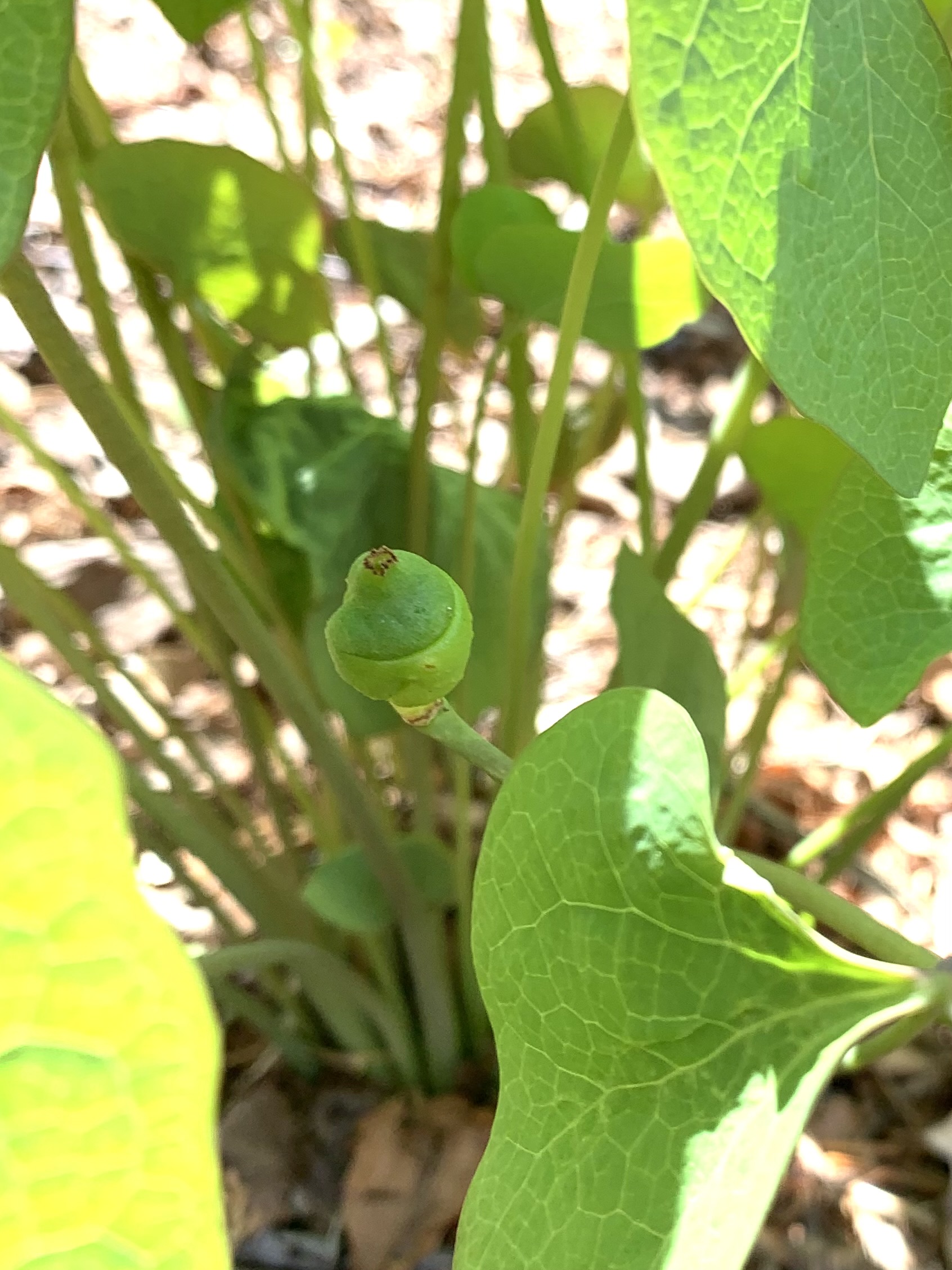
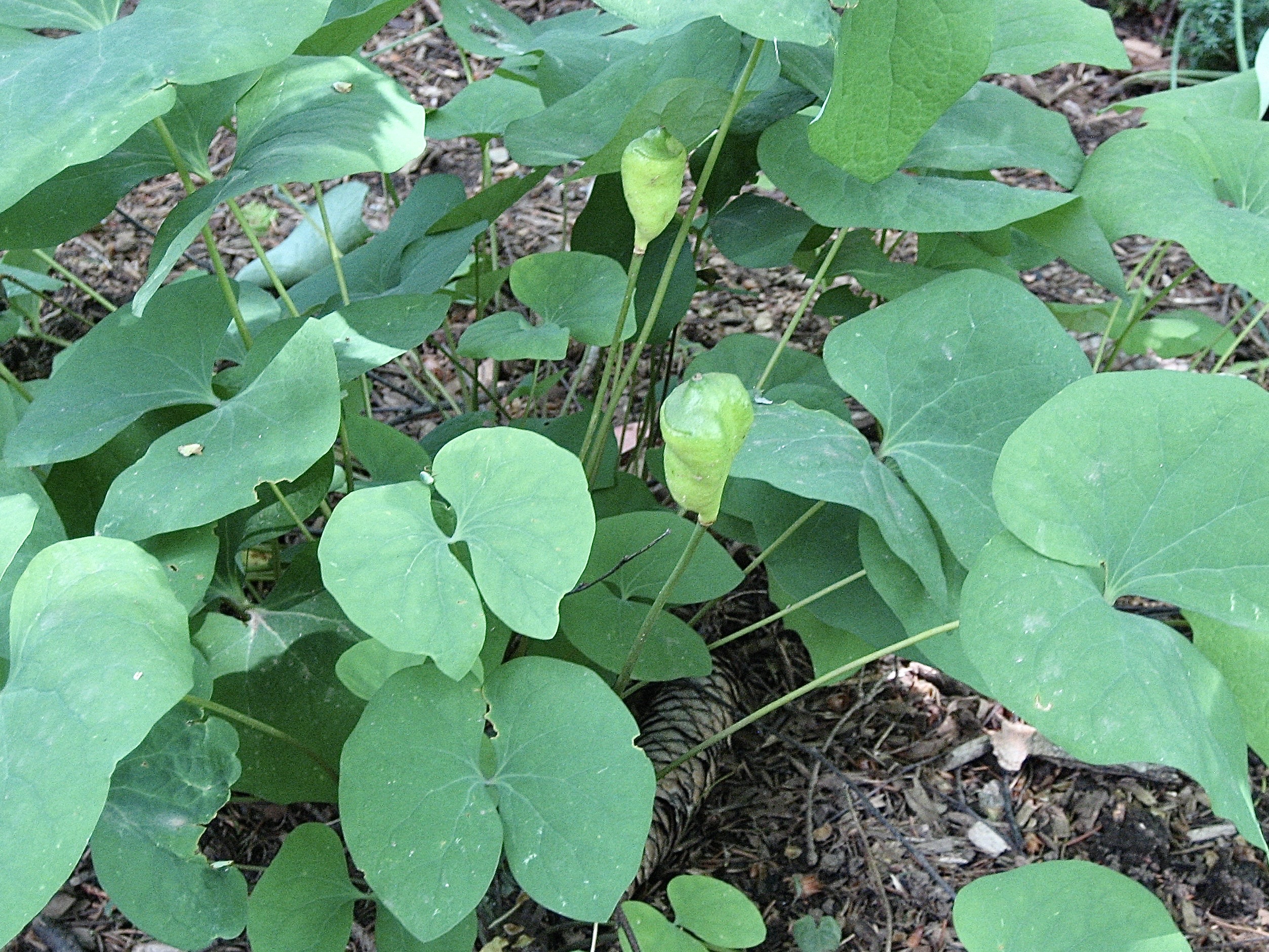
The seed capsules of Jeffersonia are amazing! They look like little tea pots with lids. By mid-summer, when the seed capsules have ripened and turned yellow, the “lids” crack open revealing large, cinnamon-colored seeds inside. If you are feeling playful, you can squeeze a pod just below the lid, and the capsule will open like a little mouth and spit out the seeds. Try it — it never gets old! Left to its own devices, the stem below the pod will begin to bend until the teapot tips over and spills out the seeds.

Photo: Rutgers School of Environmental and Biological Sciences

Photo: Rutgers School of Environmental and Biological Sciences
The seeds are carried off by ants attracted to elaiosomes, rich fatty appendages attached to the seeds. The ants feed their colonies on the eliaosomes, but do no harm to the seeds themselves. The activity of the ants helps spread the seeds to the surrounding area. Over time, colonies of Jeffersonia will be established if conditions are right.
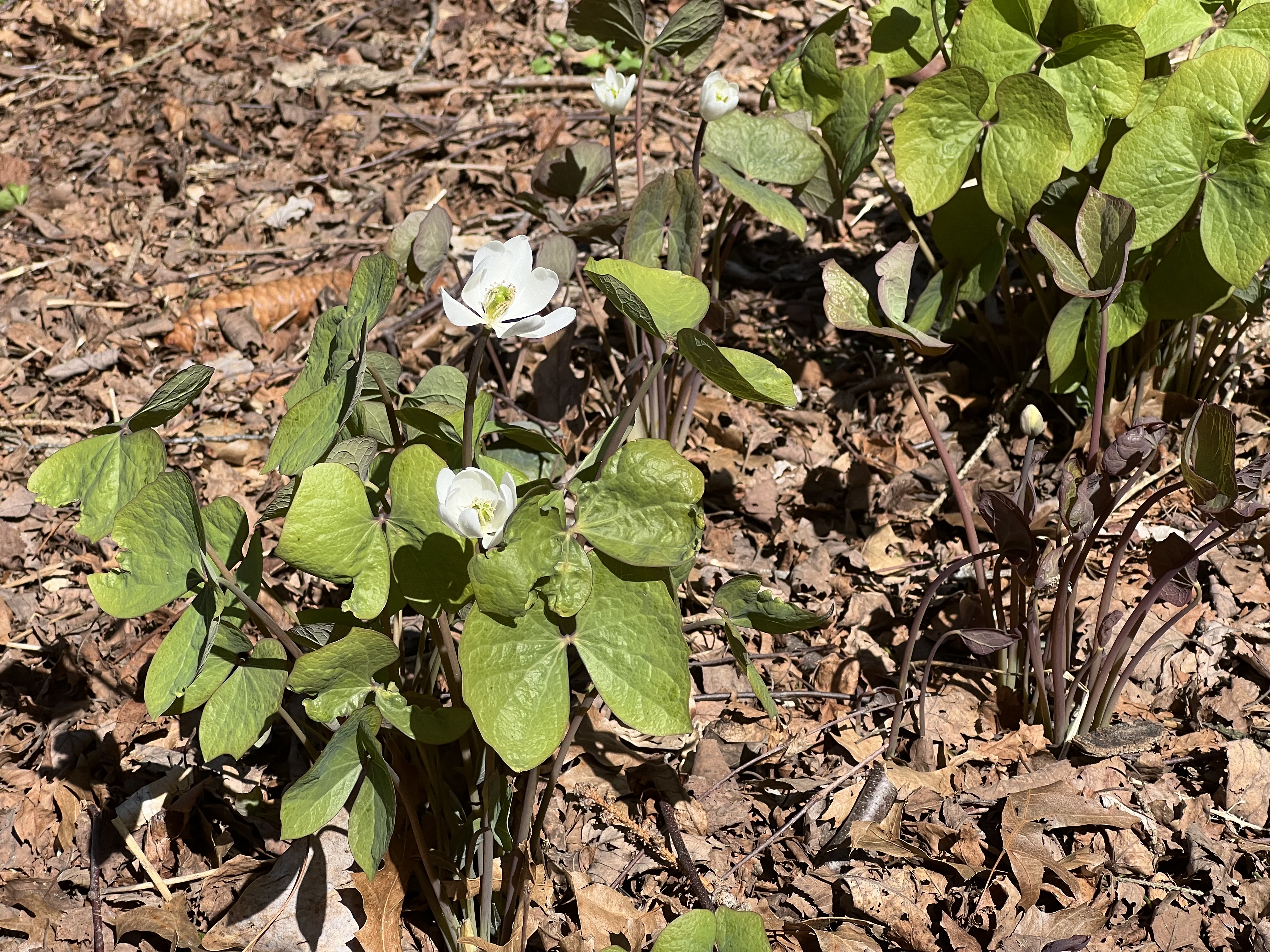
Though many early spring blooming wildflowers are considered “ephemerals,” meaning they disappear in summer, Jeffersonia remains an attractive presence in the woodland garden all season long. The mature leaves are 4 to 5 inches across, and remain fresh well into fall. The plant looks at home and will thrive under shade trees in rich loamy soil with average moisture.
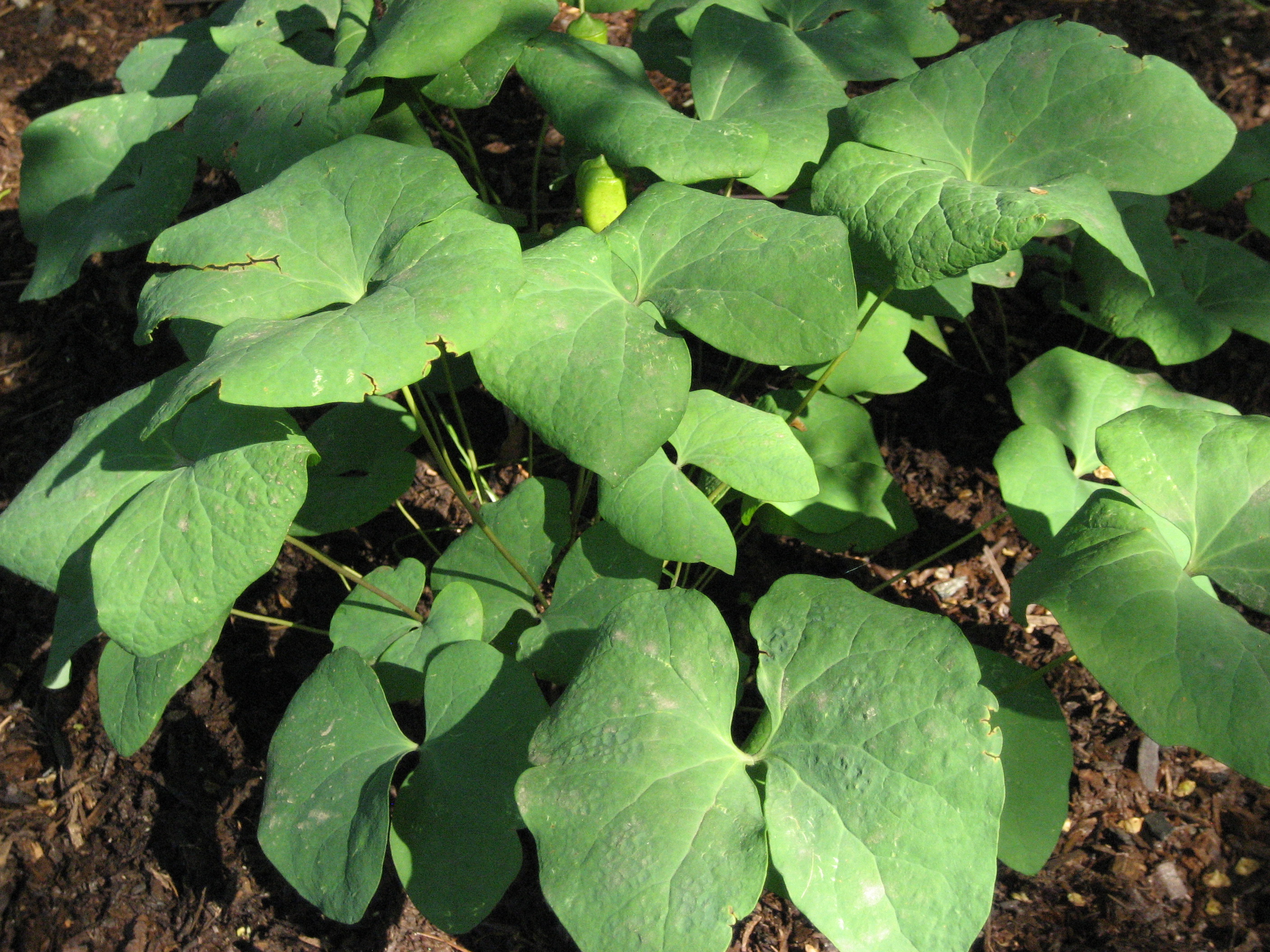
Jeffersonia is a great companion for ferns and shade-loving perennials like wild ginger, Jacob’s ladder, columbine, goatsbeard, and coral bells. Deer will eat the foliage, and though that may not kill the plant, it will prevent the following year’s flowers. So, the ideal spot for Jeffersonia is a fenced area with mature shade trees and a rich understory where fall leaves are allowed to remain and decompose naturally.
Jeffersonia’s native range is broad — from southern Canada to Tennessee and west to the Mississippi River. But much of that native habitat has been destroyed by farming, logging, and development, so it is difficult to find Jeffersonia in the wild today. Planting it in our backyards is a way to reclaim a bit of America’s past and restore nature. You can find Jeffersonia for sale at native plant sales, nurseries that carry native plants, and on-line in bare-root form from native plant vendors.
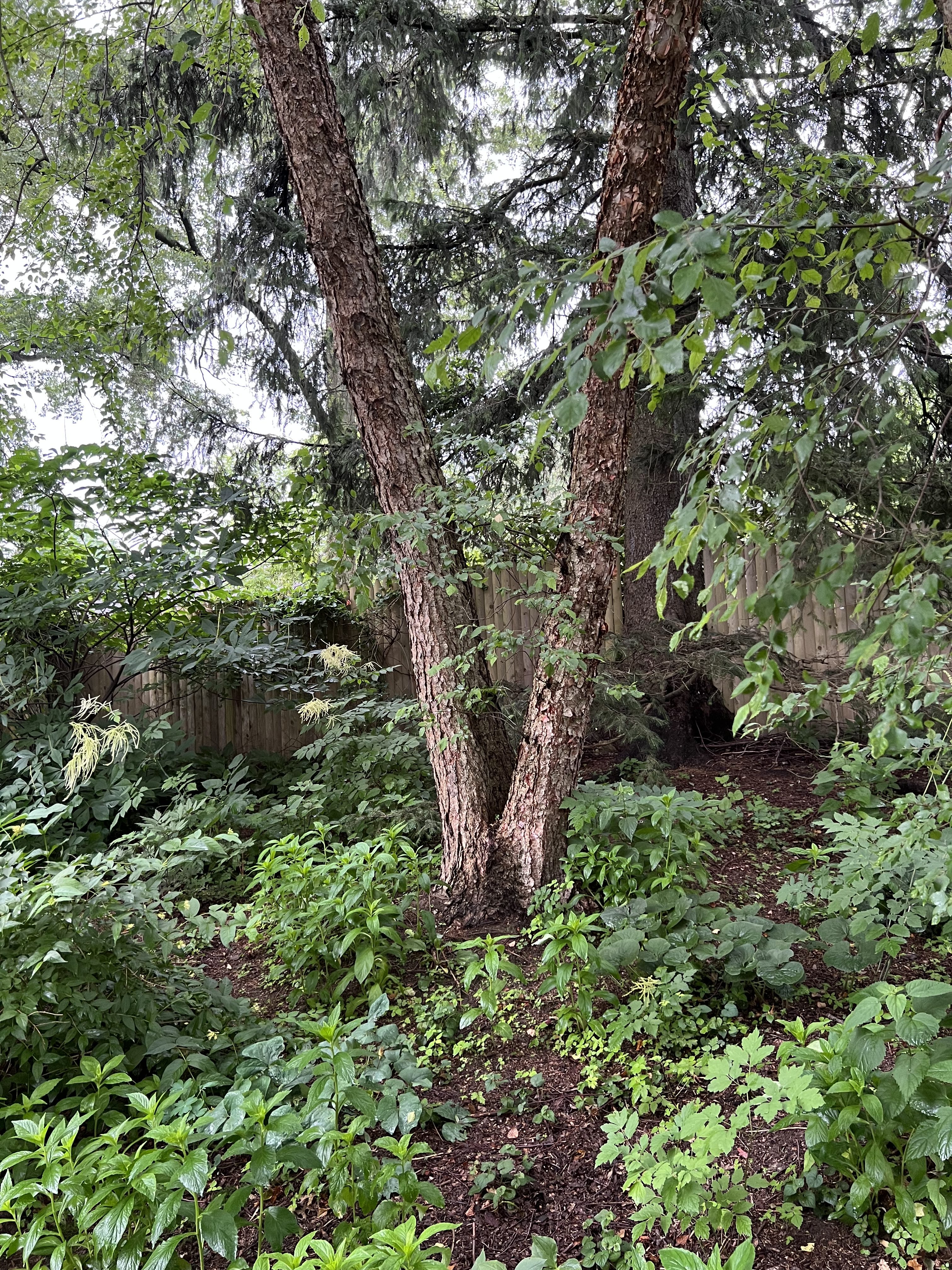
plants.
And yes, as you may have guessed, Jeffersonia diphylla was named for our founding father (and esteemed naturalist), Thomas Jefferson. Two early American botanists, William Bartram and Benjamin Barton studied the plant and concluded that it had been misclassified previously and rightfully belonged to its own genus. Barton was a member of the American Philosophical Society founded by Benjamin Franklin, and at a meeting of the Society in 1792, he presented his evidence and suggested that the new genus be named for his friend and fellow Society member, Thomas Jefferson. Interestingly, since then, the only other species yet discovered in the same genus is a plant native to Korea, Eastern China, and Siberia: Jeffersonia dubia. So that Asian plant today carries the name of an early American president!
If you have a shady area in your yard, consider including a bit of American natural history by adding this fascinating woodland wonder, Jeffersonia diphylla.


A great read! I loved the part about the seed pods. They remind me a bit of muppets!
I love Jeffersonia, hope to plant lots in the Untermyer Stumpery.
All of the spring ephemerals and early bloomers will be wonderful at Untermyer!
Lovely and amazing!